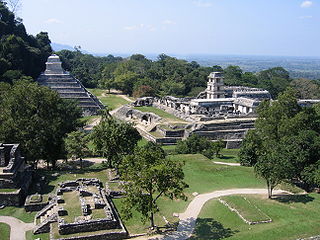
The 7th century is the period from 601 through 700 in accordance with the Julian calendar in the Christian Era.

Year 623 (DCXXIII) was a common year starting on Saturday of the Julian calendar. The denomination 623 for this year has been used since the early medieval period, when the Anno Domini calendar era became the prevalent method in Europe for naming years.
The 610s decade ran from January 1, 610, to December 31, 619.
The 580s decade ran from January 1, 580, to December 31, 589.
The 590s decade ran from January 1, 590, to December 31, 599.
Year 605 (DCV) was a common year starting on Friday of the Julian calendar. The denomination 605 for this year has been used since the early medieval period, when the Anno Domini calendar era became the prevalent method in Europe for naming years.

Year 602 (DCII) was a common year starting on Monday of the Julian calendar. The denomination 602 for this year has been used since the early medieval period, when the Anno Domini calendar era became the prevalent method in Europe for naming years.

Year 601 (DCI) was a common year starting on Sunday of the Julian calendar. The denomination 601 for this year has been used since the early medieval period, when the Anno Domini calendar era became the prevalent method in Europe for naming years.

600 (DC) was a leap year starting on Friday of the Julian calendar. The denomination 600 for this year has been used since the early medieval period, when the Anno Domini calendar era became the prevalent method in Europe for naming years.

Year 587 (DLXXXVII) was a common year starting on Wednesday of the Julian calendar. The denomination 587 for this year has been used since the early medieval period, when the Anno Domini calendar era became the prevalent method in Europe for naming years.

Year 617 (DCXVII) was a common year starting on Saturday of the Julian calendar. The denomination 617 for this year has been used since the early medieval period, when the Anno Domini calendar era became the prevalent method in Europe for naming years.

Year 619 (DCXIX) was a common year starting on Monday of the Julian calendar. The denomination 619 for this year has been used since the early medieval period, when the Anno Domini calendar era became the prevalent method in Europe for naming years.

Year 594 (DXCIV) was a common year starting on Friday of the Julian calendar. The denomination 594 for this year has been used since the early medieval period, when the Anno Domini calendar era became the prevalent method in Europe for naming years.

Year 599 (DXCIX) was a common year starting on Thursday of the Julian calendar. The denomination 599 for this year has been used since the early medieval period, when the Anno Domini calendar era became the prevalent method in Europe for naming years.

Year 591 (DXCI) was a common year starting on Monday of the Julian calendar. The denomination 591 for this year has been used since the early medieval period, when the Anno Domini calendar era became the prevalent method in Europe for naming years.

Gang I-sik is the name given to the Goguryeo commander in the 590s. He is mentioned in the genealogy of Jinju Gang clan and the Joseon Sanggosa, written by Shin Chaeho. In Samguk Sagi and Book of Sui

The first conflict of the Goguryeo–Tang War started when Emperor Taizong of the Tang dynasty led a military campaign against Goguryeo in 645 to protect Silla and punish Generalissimo Yeon Gaesomun for the killing of King Yeongnyu. The Tang forces were commanded by Emperor Taizong himself, and generals Li Shiji, Li Daozong, and Zhangsun Wuji.
The 600s decade ran from January 1, 600, to December 31, 609.
Yeongyang of Goguryeo was the 26th monarch of Goguryeo, the northernmost of the Three Kingdoms of Korea. He was the eldest son of Pyeongwon of Goguryeo. During his reign, Goguryeo defeated multiple invasions by the Sui dynasty.

The Avar–Byzantine wars were a series of conflicts between the Byzantine Empire and the Avar Khaganate. The conflicts were initiated in 568, after the Avars arrived in Pannonia, and claimed all the former land of the Gepids and Lombards as their own. This led to an unsuccessful attempt to seize the city of Sirmium from Byzantium, which had previously retaken it from the Gepids. Most subsequent conflicts came as a result of raids by the Avars, or their subject Slavs, into the Balkan provinces of the Byzantine Empire.













